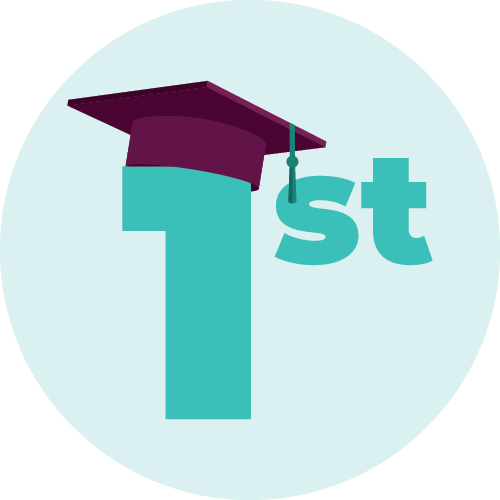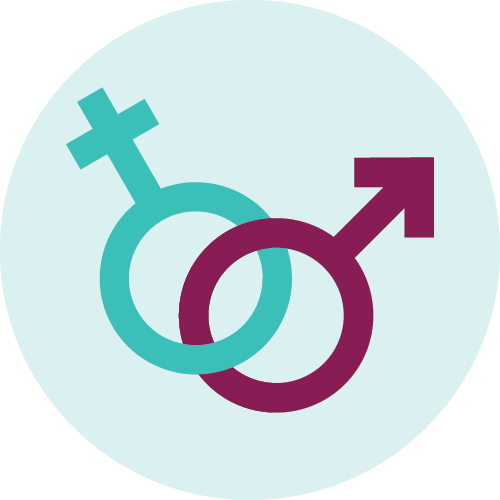Achievement Gaps
Equity, Access & SuccessA Commitment to Equity
Helping Every Student Succeed
The term “achievement gap” refers to “any significant and persistent disparity in academic performance or educational attainment between different groups of students.”1 Community colleges nationwide serve a diverse population, including many students from historically underrepresented groups. These students face a multitude of challenges that can directly impact access and success in college. As a result, community colleges continue to observe alarming achievement gaps among various student groups. Therefore, Achieving the Dream (ATD) has encouraged member colleges to put equity at the forefront of completion efforts.2
The first years of college are critical for student success. Indeed, students who gain momentum early are more likely to achieve their long-term goals, such as graduating with an associate degree or transferring to a four-year institution.3 An evaluation of first term, first year, and second year success outcomes—collectively referred to as early momentum metrics—can help NOVA identify where achievement gaps occur during the critical first terms of college. In doing so, NOVA will be better positioned to create policies and initiatives that address equity from the very beginning of a student’s academic career, which can improve their opportunity for long-term success at NOVA and beyond.
Nationwide NUMBERS

40%
of associate degrees were earned by students of color.4
32%
of bachelor’s degrees were earned by students of color.4

39%
of all community college students graduated within six years.5

36%
of Hispanic community college students graduated within six years.5

28%
of black community college students graduated within six years.5
Nationwide NUMBERS

40%
of associate degrees were earned by students of color.4
32%
of bachelor’s degrees were earned by students of color.4

39%
of all community college students graduated within six years.5
36%
of Hispanic community college students graduated within six years.5


28%
of black community college students graduated within six years.5
Nationwide NUMBERS

40%
of associate degrees were earned by students of color.4
32%
of bachelor’s degrees were earned by students of color.4

39%
of all community college students graduated within six years.5

36%
of Hispanic community college students graduated within six years.5

28%
of black community college students graduated within six years.5
Student Access vs. Student Success





Student Access

Student Success

Student Access vs. Student Success





Student Access vs. Student Success

White

Hispanic/Latino

Black/African American

Asian

Other
Student Access
Tap for bigger
Student Sucess
Tap for bigger
NOVA’s Equity Scorecard





First Term
COMPLETED 80 PERCENT OF CREDITS ATTEMPTED
EARNED 12 OR MORE CREDITS


First Year
FALL-TO-SPRINGRETENTION RATE
COMPLETED COLLEGE-LEVEL ENGLISH AND MATH


Second Year
FALL-TO-FALL RETENTION RATE
EARNED 48 OR MORE CREDITS


NOVA’s Equity Scorecard

All

Black or African American

Asian

White

Hispanic or Latino

All

Black/African American

Asian

White

Hispanic/Latino
First Term
COMPLETED 80 PERCENT OF CREDITS ATTEMPTED

EARNED 12 OR MORE CREDITS

First Year
FALL-TO-SPRING RETENTION RATE

COMPLETED COLLEGE-LEVEL ENGLISH AND MATH

Second Year
FALL-TO-FALL RETENTION RATE

EARNED 48 OR MORE CREDITS

Learn More
Resources for Students, Faculty, and Staff
NOVA is deeply committed to the values of access, opportunity, student success, and excellence. In particular, the College aims to provide students with access to high-quality, post-secondary education in the Northern Virginia region, as well as to promote success by preparing students to graduate, transfer, and enter the workforce with improved educational and labor market skills.
Student equity is at the forefront of programs and initiatives at NOVA. NOVA provides a variety of services to help every student succeed, many of which may be particularly helpful to students from historically underrepresented populations.

Financial Stability Program
Learn more about the Financial Stability Program and find available resources at: https://blogs.nvcc.edu/wssn

Single Stop
Learn more about Single Stop and find available resources at: https://nvcc.singlestoptechnologies.com

Emergency Grants
Find the application and more information about eligibility at: https://blogs.nvcc.edu/wssn/student-emergency-grant

Food Pantries
Learn more and find locations at: https://blogs.nvcc.edu/wssn/resources-services/food-pantries
Citations
- (2013). Achievement Gap. The Glossary of Education Reform.
- Achieving the Dream Equity Statement.
- Jenkins, D. and Thomas, B. (2017). Early Momentum Metrics: Why They Matter for College Improvement. CCRC Research Brief Number 65. Community College Research Center.
- Espinosa, L.L., Turk, J.M., & Chessman, H.M. (2019). Race and Ethnicity in Higher
Education: A Status Report. American Council on Education. - Shapiro, D., Dundar, A., Huie, F., Wakhungu, P.K., Bhimdiwala, A. & Wilson, S.E. (2018). Completing College: A National View of Student Completion Rates – Fall 2012 Cohort. Signature Report No. 16. National Student Clearinghouse Research Center.
- (2019). NOVA Equity Scorecard. NOVA Office of Institutional Effectiveness and Student Success, Northern Virginia Community College.
- (2013). Achievement Gap. The Glossary of Education Reform.
- Achieving the Dream Equity Statement.
- Jenkins, D. and Thomas, B. (2017). Early Momentum Metrics: Why They Matter for College Improvement. CCRC Research Brief Number 65. Community College Research Center.
- Espinosa, L.L., Turk, J.M., & Chessman, H.M. (2019). Race and Ethnicity in Higher Education: A Status Report. American Council on Education.
- Shapiro, D., Dundar, A., Huie, F., Wakhungu, P.K., Bhimdiwala, A. & Wilson, S.E. (2018). Completing College: A National View of Student Completion Rates – Fall 2012 Cohort. Signature Report No. 16. National Student Clearinghouse Research Center.
- (2019). NOVA Equity Scorecard. NOVA Office of Institutional Effectiveness and Student Success, Northern Virginia Community College.
Learn More
Resources for Students, Faculty, and Staff
NOVA is deeply committed to the values of access, opportunity, student success, and excellence. In particular, the College aims to provide students with access to high-quality, post-secondary education in the Northern Virginia region, as well as to promote success by preparing students to graduate, transfer, and enter the workforce with improved educational and labor market skills.
Student equity is at the forefront of programs and initiatives at NOVA. NOVA provides a variety of services to help every student succeed, many of which may be particularly helpful to students from historically underrepresented populations.

Financial Stability Program
Learn more about the Financial Stability Program and find available resources at: https://blogs.nvcc.edu/wssn

Single Stop
Learn more about Single Stop and find available resources at: https://nvcc.singlestoptechnologies.com

Emergency Grants
Find the application and more information about eligibility at: https://blogs.nvcc.edu/wssn/student-emergency-grant

Food Pantries
Learn more and find locations at: https://blogs.nvcc.edu/wssn/resources-services/food-pantries
Citations
- (2013). Achievement Gap. The Glossary of Education Reform.
- Achieving the Dream Equity Statement.
- Jenkins, D. and Thomas, B. (2017). Early Momentum Metrics: Why They Matter for College Improvement. CCRC Research Brief Number 65. Community College Research Center.
- Espinosa, L.L., Turk, J.M., & Chessman, H.M. (2019). Race and Ethnicity in Higher Education: A Status Report. American Council on Education.
- Shapiro, D., Dundar, A., Huie, F., Wakhungu, P.K., Bhimdiwala, A. & Wilson, S.E. (2018). Completing College: A National View of Student Completion Rates – Fall 2012 Cohort. Signature Report No. 16. National Student Clearinghouse Research Center.
- (2019). NOVA Equity Scorecard. NOVA Office of Institutional Effectiveness and Student Success, Northern Virginia Community College.

















